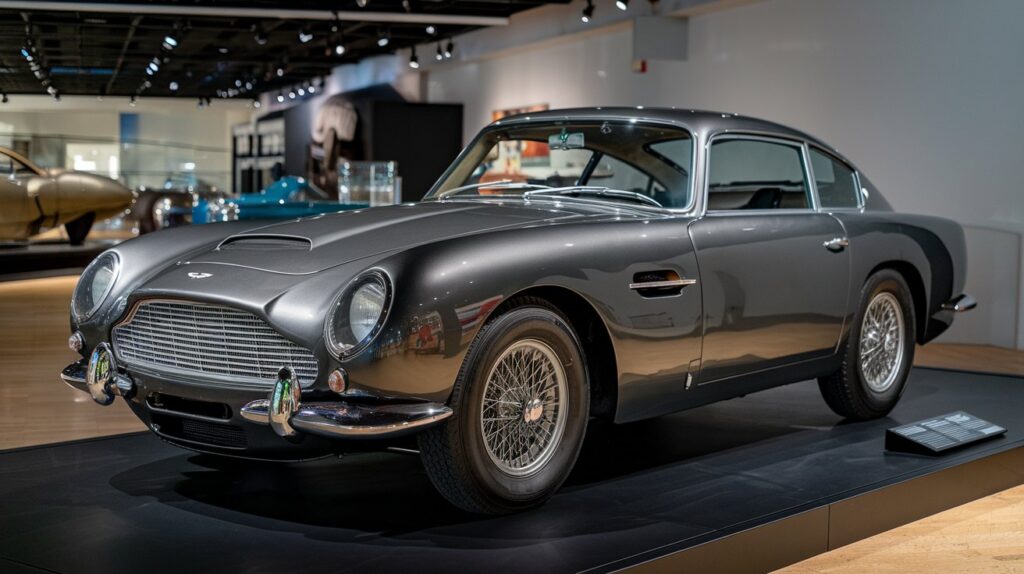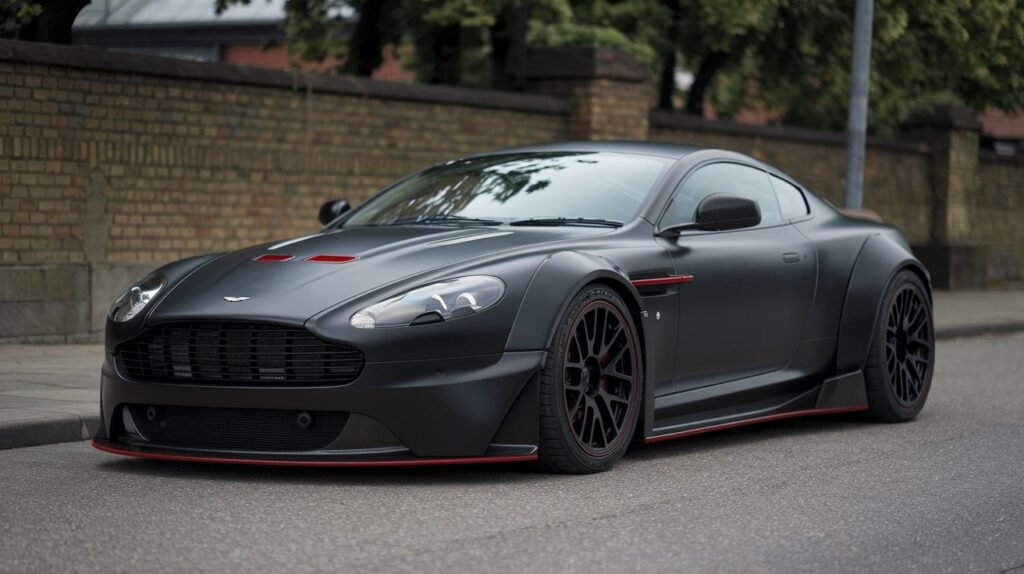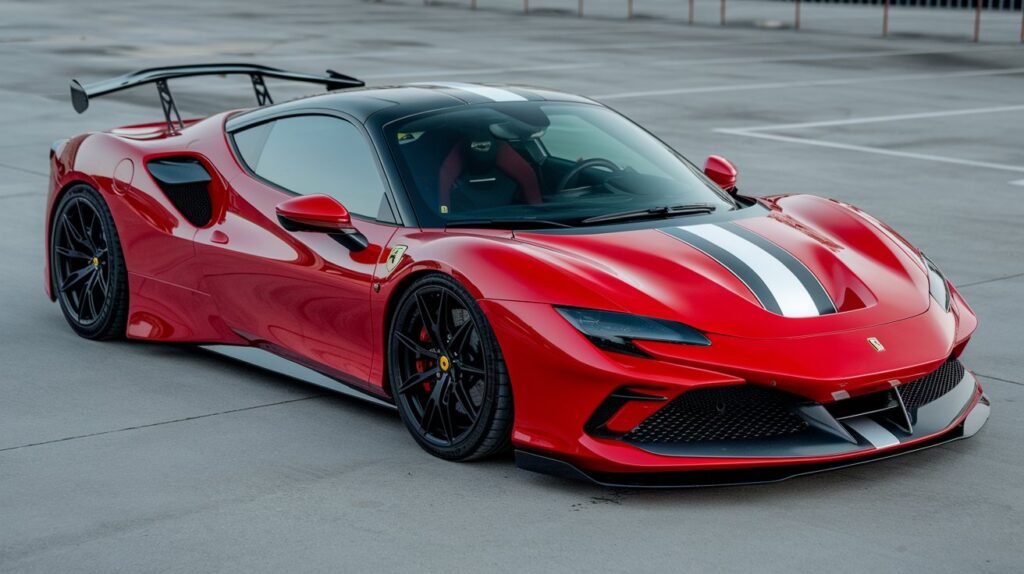Introduction: Aston Martin – The Quintessential British Luxury Car
Aston Martin is more than a luxury car manufacturer; it represents a symbol of British elegance, innovation, and resilience. From its handcrafted designs to its association with James Bond, Aston Martin has created a unique place for itself in the world of high-performance, luxury automobiles. This legacy spans over a century, characterized by a series of challenges, innovations, and reinventions, all of which have culminated in the brand we know today. Aston Martin’s story is one of endurance, craftsmanship, and, above all, an unwavering commitment to the art of driving.
Table of Contents
The Founding Years: Vision, Ambition, and Early Challenges (1913-1947)
A Dream Born from Racing Passion
Aston Martin’s story began in 1913, in the heart of London, with the partnership of Lionel Martin and Robert Bamford. Originally known as Bamford & Martin Ltd., the company was born out of Lionel Martin’s passion for speed and his dream of building a car that was not only fast but also refined. This early vision was strongly rooted in racing, which became an integral part of Aston Martin’s identity. Despite the founders’ enthusiasm, production was soon interrupted by the onset of World War I, delaying the dream and adding immediate financial strain to the budding company.
Financial Struggles and the Search for Stability
In the post-war years, the company was rebranded as Aston Martin, inspired by Lionel Martin’s racing success at the Aston Clinton Hill Climb. Yet, despite their growing reputation for crafting race-worthy cars, Aston Martin faced constant financial troubles. By 1925, the company was on the brink of collapse, leading to bankruptcy and a series of ownership changes. These early struggles and the continuous search for financial stability helped to shape Aston Martin’s character, embedding resilience and determination into its DNA.
The David Brown Era: A New Vision and Racing Glory (1947-1972)
A Turning Point with David Brown
The pivotal moment in Aston Martin’s history came in 1947 when David Brown, an industrialist with a vision, acquired the company. Brown’s takeover marked the beginning of a new era and the launch of the iconic “DB” series, named after himself. Under Brown’s leadership, Aston Martin was transformed from a small, struggling manufacturer into a globally recognized luxury brand. The introduction of the DB2 in 1950 symbolized this shift, combining high performance with a new standard of sophistication that would become a trademark of the Aston Martin name.

Racing to Glory: The 1959 Le Mans Victory
In 1959, Aston Martin’s DBR1 won the 24 Hours of Le Mans, marking a pinnacle of success in endurance racing. This victory was not just a win on the racetrack; it solidified Aston Martin’s reputation as a high-performance brand. The DB4, DB5, and DB6 followed, each adding to the company’s prestige, but it was the DB5 that would soon change Aston Martin’s story forever. David Brown’s era was defined by innovation and expansion, setting a standard of luxury and performance that the company continues to uphold.
The James Bond Connection: Creating a Cultural Icon
The DB5 and the Bond Legacy
In 1964, the Aston Martin DB5 made its cinematic debut in Goldfinger, forever associating the brand with the suave and daring persona of James Bond. The DB5, with its sleek lines and powerful engine, was the perfect match for Bond, embodying sophistication, danger, and style. This appearance not only brought Aston Martin a global audience but also embedded it into popular culture as the ultimate symbol of luxury and excitement. For many, the DB5 became “the world’s most famous car,” and the Bond association became an enduring part of Aston Martin’s brand identity.
Bond Cars: An Ongoing Legacy
The Bond-Aston Martin relationship extended beyond Goldfinger, with various Aston Martin models featured in films from GoldenEye to No Time to Die. This connection has helped Aston Martin remain culturally relevant for over 50 years, elevating its DB series to new levels of fame. The partnership with Bond has kept Aston Martin in the global spotlight, connecting it with new generations of enthusiasts who see the DB5 and other models as symbols of adventure and luxury.
Financial Instability and Ownership Changes (1972-2000)
Post-Brown Era: Searching for New Leadership
Following David Brown’s departure in 1972, Aston Martin entered a turbulent period. Without Brown’s visionary leadership, the company struggled with financial difficulties and management changes. Aston Martin faced an increasingly competitive global market but continued to produce cars with an unmistakable character. During this time, Victor Gauntlett, an oil executive, helped keep the Bond connection alive by reviving the Aston Martin brand in the 1987 Bond film The Living Daylights. However, financial stability remained elusive.
Ford Steps In: Modernization and Expansion
A new chapter began in 1987 when Ford acquired a 75% stake in Aston Martin, providing much-needed resources and stability. Ford’s involvement allowed Aston Martin to modernize its production methods, expand its model range, and increase overall output. This modernization led to the release of the DB7 in 1994, which became one of the brand’s best-selling models and helped Aston Martin regain its reputation as a luxury powerhouse. The DB7’s success laid the groundwork for future growth and showed that Aston Martin could thrive under new leadership.
A New Era of Innovation and Growth (2000-2020)
Introducing New Models for a Modern Market
With the turn of the millennium, Aston Martin introduced new models that resonated with a modern, affluent audience. The V8 Vantage, DB9, and Rapide each brought something unique to the table, combining Aston Martin’s signature style with the latest technology. The DB9, in particular, was a critical success, featuring a 5.9L V12 engine and an all-aluminum platform that embodied Aston Martin’s commitment to both elegance and power. These models attracted a new generation of buyers and reinforced the brand’s reputation for excellence.
The Rise of Aston Martin Racing (AMR)
In 2004, Aston Martin established Aston Martin Racing (AMR), a dedicated division for motorsports. This move not only elevated Aston Martin’s profile in the racing world but also underscored its performance-oriented DNA. The racing division achieved numerous victories, including successful campaigns in the FIA World Endurance Championship. AMR’s success demonstrated that Aston Martin could compete at the highest levels of motorsport, appealing to performance enthusiasts and reinforcing the brand’s standing as a leader in high-performance luxury vehicles.

Competitors of Aston Martin: Navigating a Competitive Landscape
Aston Martin operates in a highly competitive luxury car market, where several brands vie for attention and market share. The primary competitors of Aston Martin include Bentley, Ferrari, Maserati, Lamborghini, and Porsche. Each of these manufacturers has its unique identity, heritage, and target audience, contributing to a diverse marketplace.
Key Competitors and Their Unique Selling Points
- Bentley: Known for its unparalleled luxury and craftsmanship, Bentley emphasizes comfort and refinement in its vehicles. The brand appeals to those seeking an opulent driving experience combined with powerful performance.
- Ferrari: A name synonymous with high-performance sports cars, Ferrari focuses on speed, performance, and racing heritage. The brand is favored by enthusiasts looking for exhilarating driving experiences and cutting-edge technology.
- Maserati: Maserati combines Italian design flair with performance. Known for its stylish designs and sporty character, Maserati appeals to buyers who appreciate luxury and performance in a more understated package.
- Lamborghini: Recognized for its bold, aggressive designs and high-performance capabilities, Lamborghini attracts buyers who want to make a statement. The brand is synonymous with speed and excitement.
- Porsche: With a strong focus on performance and practicality, Porsche is celebrated for its engineering excellence and versatility. Models like the 911 blend everyday usability with thrilling performance, attracting a diverse clientele.
Competitor Comparison Table
| Brand | Founded | Headquarters | Key Models | Focus | Unique Selling Point |
|---|---|---|---|---|---|
| Aston Martin | 1913 | Gaydon, UK | DB11, Vantage, DBX | Luxury Sports Cars | Timeless design and craftsmanship |
| Bentley | 1919 | Crewe, UK | Continental GT, Bentayga | Ultra-Luxury Vehicles | Opulence and comfort |
| Ferrari | 1939 | Maranello, Italy | 488 GTB, LaFerrari | High-Performance Sports Cars | Racing heritage and speed |
| Maserati | 1914 | Modena, Italy | Ghibli, Levante | Luxury Sports Sedans/SUVs | Italian design and understated luxury |
| Lamborghini | 1963 | Sant’Agata Bolognese, Italy | Aventador, Urus | Exotic Sports Cars | Bold design and extreme performance |
| Porsche | 1931 | Stuttgart, Germany | 911, Cayenne | Performance and Practicality | Engineering excellence and versatility |
Moving into Luxury SUVs and Electric Vehicles
Expanding the Portfolio with the DBX
In 2020, Aston Martin ventured into the booming luxury SUV market with the launch of the DBX. As the brand’s first-ever SUV, the DBX marked a significant step forward, allowing Aston Martin to reach a broader audience while maintaining its luxury appeal. The DBX quickly became a bestseller, proving that Aston Martin could successfully adapt to changing market trends. By embracing the SUV segment, Aston Martin expanded its reach, appealing to both traditional buyers and a new generation seeking a unique blend of performance and practicality.
Pioneering Electric and Hybrid Vehicles
Under the leadership of Canadian billionaire Lawrence Stroll, Aston Martin shifted its focus toward electrification. A partnership with Mercedes-AMG provided access to advanced hybrid and electric technology, positioning Aston Martin for success in an evolving market. Models like the Valhalla and Valkyrie reflect this shift, combining Aston Martin’s performance heritage with cutting-edge electric technology. The brand’s move toward hybrid and electric vehicles is a bold step, demonstrating a commitment to innovation while preserving the qualities that define Aston Martin’s legacy.
Aston Martin’s Signature Design Philosophy
Craftsmanship and Personalization
Aston Martin’s commitment to craftsmanship sets it apart from other luxury carmakers. Each car is handcrafted, ensuring that every vehicle is unique. The interiors feature materials of the highest quality, such as hand-stitched leather, custom wood veneers, and brushed metal, creating an atmosphere of refined luxury. This dedication to quality has made Aston Martin a leader in automotive luxury, appealing to discerning buyers who value exclusivity and the personal touch that comes with bespoke craftsmanship.
Timeless Elegance and Distinctive Style
Aston Martin’s design philosophy prioritizes proportion, symmetry, and balance, resulting in cars that are instantly recognizable. The brand’s understated approach favors elegance over ostentation, allowing its cars to exude a timeless appeal that distinguishes them from competitors. This commitment to design excellence has enabled Aston Martin to maintain a unique identity in the luxury automotive world, appealing to those who value sophistication and style.
The Road Ahead: Adapting to a New Era
Embracing Sustainability and Electrification
As the global automotive industry shifts toward sustainable solutions, Aston Martin is poised to adapt without sacrificing its identity. The brand’s electrification strategy includes the introduction of hybrid and fully electric models by 2030. In an industry where rivals like Ferrari and Porsche are also moving toward electrification, the next decade will be critical for Aston Martin’s position in the luxury market. By embracing sustainability, Aston Martin aims to continue its legacy in a new, eco-conscious era.
Building on the Success of the DBX and Future Models
The success of the DBX has shown that Aston Martin can successfully diversify its offerings. To sustain its momentum, the brand will need to continuously innovate while preserving the qualities that have made it iconic. Upcoming electric models and advancements in technology will play a crucial role in shaping Aston Martin’s future, allowing it to meet the needs of modern drivers while staying true to its heritage of luxury, performance, and design excellence.
Aston Martin Faces Supply Chain Disruptions, Reduces 2024 Output Forecast
Aston Martin recently announced adjustments to its 2024 production targets following substantial supply chain disruptions impacting its upgraded models. New CEO Adrian Hallmark has revealed that critical suppliers, particularly in Germany, faced insolvency, disrupting production of components such as seats and dashboards. Consequently, Aston Martin cut its 2024 output estimate from 7,000 to 6,000 units, aiming for production stability but missing its original cash flow goals. Despite these setbacks, Chairman Lawrence Stroll remains optimistic, aiming to meet ambitious financial goals by 2025.
FAQs About Aston Martin
1. What year was Aston Martin founded?
Aston Martin was founded in 1913 by Lionel Martin and Robert Bamford in London, originally under the name “Bamford & Martin Ltd.”
2. What is the significance of the name “Aston Martin”?
The name “Aston Martin” comes from Lionel Martin’s victory at the Aston Clinton Hill Climb in Buckinghamshire, which inspired the company’s new name in 1920.
3. How did Aston Martin become associated with James Bond?
Aston Martin gained worldwide fame when the DB5 was featured in the 1964 James Bond film Goldfinger. The association has continued with several models appearing in Bond films, making the cars iconic symbols of luxury and sophistication.
4. What were the major challenges faced by Aston Martin in the 1970s?
After the sale of the company by David Brown in 1972, Aston Martin experienced financial difficulties and management instability. This period was marked by ownership changes and a struggle to maintain its luxury status in a competitive market.
5. What is the DB series, and why is it significant?
The DB series, named after David Brown, includes some of Aston Martin’s most famous models, such as the DB5 and DB11. This series represents a turning point in the brand’s history, marking its transition to a global luxury car manufacturer.
6. How did Aston Martin evolve in the 1990s?
In 1987, Ford acquired a 75% stake in Aston Martin, leading to modernization and the introduction of successful models like the DB7 in 1994, which helped revive the brand’s reputation.
7. What recent models has Aston Martin introduced?
Recent models include the DBX, Aston Martin’s first SUV, launched in 2020, and hybrid models like the Valhalla and Valkyrie, showcasing the brand’s shift towards electrification and modern performance.
8. What distinguishes Aston Martin’s design philosophy?
Aston Martin emphasizes timeless elegance and craftsmanship, using high-quality materials and a focus on proportions and balance in its designs. This philosophy has helped the brand maintain a unique identity in the luxury car market.
9. How is Aston Martin adapting to the trend of electrification in the automotive industry?
Aston Martin is investing in hybrid and electric models, with plans to introduce a fully electric lineup by 2030. Collaborations with technology partners, like Mercedes-AMG, are helping them stay competitive in the evolving market.
10. What is the future outlook for Aston Martin?
Aston Martin aims to balance its heritage of luxury and performance with modern innovations. The brand is focused on expanding its model range, enhancing sustainability, and capturing a new generation of buyers while remaining true to its iconic status.
Conclusion: A Legacy That Defines Luxury and Performance
From its early struggles to its status as a global icon, Aston Martin’s journey has been one of persistence and evolution. The brand has remained true to its founding principles of craftsmanship, elegance, and innovation. As Aston Martin enters a new era, it does so with a deep respect for its heritage and a commitment to the future, continuing to captivate enthusiasts and collectors worldwide. The Aston Martin legacy is not just a story of cars; it is a story of resilience, ambition, and the pursuit of perfection, setting a standard that few can match in the world of luxury automobiles.

